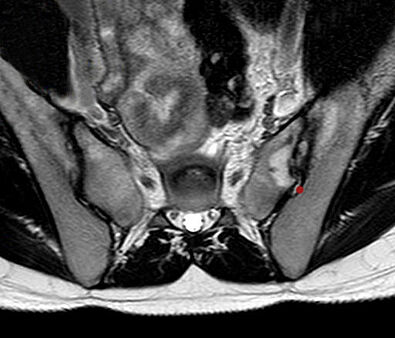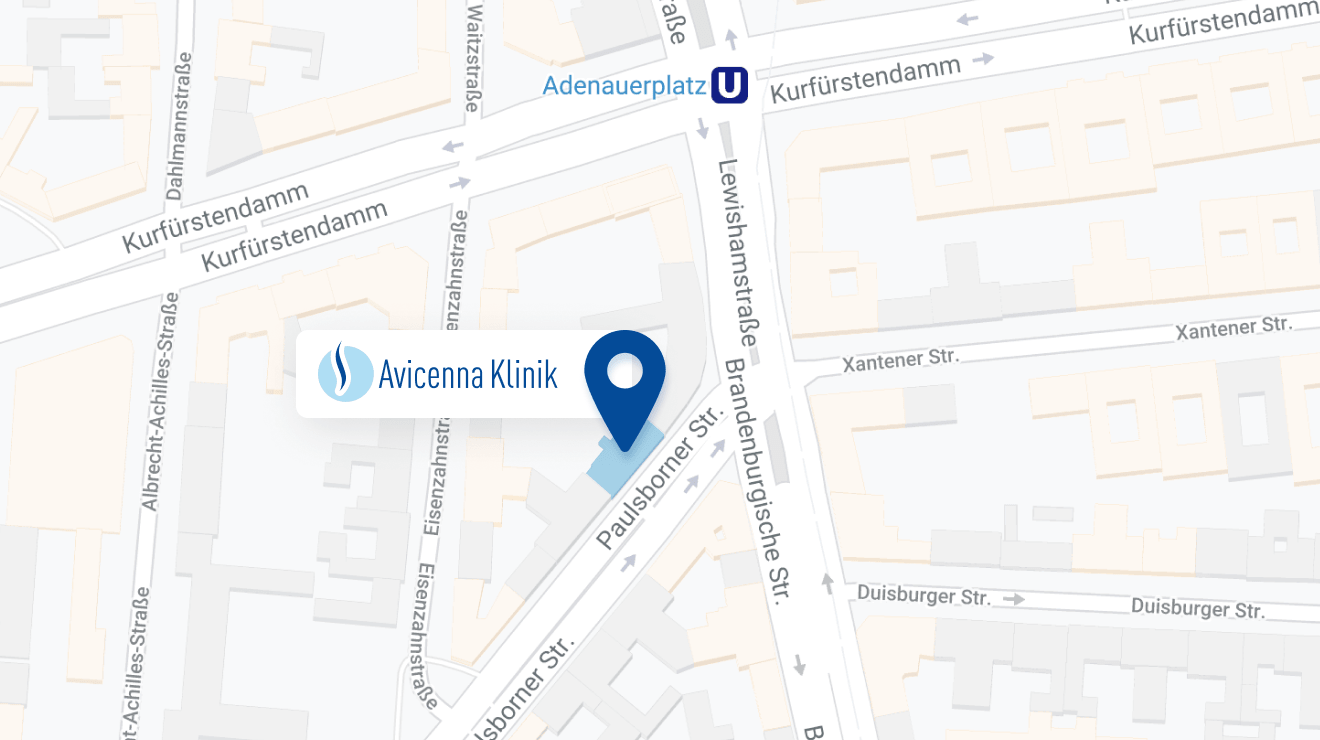What is the sacroiliac joint syndrome (SIJ)?
The so-called sacroiliac joint, in short SIJ, is probably only a term used for most people when they suffer from lower back pain. The sacroiliac joint connects the pelvis to the lower spinal column section with two pelvic shovels. Its name is eponym - the joint lies between the ilium = (ilium) and sacrum = (sacrum). The sacroiliac joint is not only the least known joint of our body but also the least mobile one. In contrast to 'typical' joints such as the knee joint, the elbow or the shoulder, the SIJ has a restricted place to move. We are talking about a tight joint with a tight joint cavity. The two adjacent joint surfaces are each connected to ribbons of fibrocartilage. When jogging or in sports such as soccer and handball, which imply intensive running, they are subjected to extreme pressure. The SIJ acts as a kind of shock absorber that cushions the incoming forces and transmits them to the spine. Even the slightest displacements in this sensitive construct called the sacroiliac joint may cause severe back pain. When a mother gives birth to a baby, the ISG has a very special meaning. A low movement of the sacrum joint over the ilium one and the associated elongation of the pubic symphysis increases namely the width of the pelvic ring which is important for the passage of the child's head at birth.
Very often pain comes from the SIJ
Almost everybody (90%) suffer at least once in a lifetime of back pain. Something like one human out of three suffers more or less regularly from back pain. Lower back pain is common and in some cases it comes from the sacroiliac joint. About 60%-80% of the population suffers almost once a year from SIJ pain accompanied by local muscular tension on the lumbar spine and consequently on buttocks. Sacroiliac joint blockage with severe back pain can occur at any age, affecting both men and women equally.
The SIJ may also be affected by osteoarthritis
Since ligaments are very tight and articular surfaces are less resilient, it goes from strain (for example in sports), tensile or compressive loads on the ligamentous apparatus of the joint (for example heavy lifting or overweight), to incorrect posture and other factors to irritation, wear or to an acute or chronic inflammation of these articular surfaces. When it comes to a sacroiliac joint syndrome jerky movements, downfall (including a sudden kick into the void) or pelvic twisting can cause dislocations and fractures of the inter-iliac joint. In addition, the sacroiliac joints are very often affected also by ankylosing spondylitis. The SIJ joint may also be affected by osteoarthritis. Similarly, there may be a so-called SIJ blockage in the joint. Then it literally jams itself in the joint.
Changes or diseases of the spine such as spondylolisthesis, instability, herniated disc, osteoarthritis, especially after spinal surgery can increase the strain on the SIJ and cause pain, but also broken bones, tumors or infections can be considered specific causes.
Symptoms? Not only back pain
The main symptom of the SIJ blockage is back pain, which is often described as a deep lumbar. Current studies attributed about 25% of all chronic low back pain on the SIJ. Chronic SIJ pain is usually localized in the lateral pelvis and/or on the groin area. Some also report pain in the lower abdomen caused by tensing of the lumbar iliac muscle. Often pain takes place in the buttocks, groin and lumbar spine area. Pain can also be accompanied by discomfort such as tingling. Even knee pain can be a symptom of SIJ blockage. The back pain caused by diseases of the sacroiliac joint increases in intensity during the course of the day. Sitting, turning over, lifting heavy objects and standing for a long time can be specifically painful.
Diagnosis of the SIJ
Precisely because a sacroiliac joint syndrome causes no clearly typical symptoms, the diagnosis is often made late, and sufferers are either not treated for a long time or not properly - in other words: the diagnosis of SIJ diseases requires much expertise. Therefore, the blockage is in the hands of a spine specialist. The physical exam includes tests for throbbing pain.
One method of investigation is the so-called "Mennell sign". The patient lies on his stomach and the doctor fixes the sacroiliac joint with one hand. With the other hand, he raises a leg. If he feels pain in the joint, the Mennell sign is positive and indicates an SIJ syndrome. There is also the so-called "Patrick test" in supine position. You have to place your right foot on the left knee and drop the bent right leg to the right side. Subsequently, the test is carried out on the opposite side. In case of pain or limited mobility, this indicates the involvement of the hip or sacroiliac joint.
Imaging techniques such as CT or MRI can also help to do an accurate diagnosis. However, they alone are not enough. The latest information on whether it is an SIJ syndrome is given by a targeted administration of painkillers - directly into the sacroiliac joint. If the pain disappears quickly, it clearly confirms the disease.
There are several ways to treat sacro-iliac joint pain
In most cases, discomfort in the area of SIJ improves quickly by itself. Therefore, it is often sufficient to reduce the burden a few days and to take painkillers. Basically one can say: There are enough ways to solve an SIJ blockade. Physiotherapy treatment with special sacroiliac joint exercises is a sensible start to therapy. Also, heat treatment can help relieve the SIJ discomfort. Specially trained physicians or physiotherapists can resolve joint blockages through manual therapy. Two different methods are used. Mobilization and Manipulation: with the first one careful stretching improves the mobility of the affected joint while manipulation, a short-term impulse on the affected joint is used to treat a newly occurring SIJ syndrome. In some countries manipulation therapy is performable only by doctors.
In the so-called infiltration therapy, the doctor injects local anesthetics directly to the point in which the pain origins itself. The local anesthetics will be injected into the ligaments of the sacroiliac joint. In addition to local anesthetics (infiltrations), anti-inflammatory and glucocorticoids, such as cortisone, can also be injected. Denervation under fluoroscopic control makes it possible to shut down the irritated nerves. Last but not least: If all the measures that had been taken did not help or helped a little bit, a stiffening (fixation) of the strained joint is part of the modern treatment concept.
Prognosis - that is how you build up a healthy musculature
Usually, once pain disappears after successful treatments, patients wonder if they can start to live their normal lives as they did before the pain appeared. The right behavior after such a treatment is to have patience and learn how to live a back-friendly everyday life. Only then will the medically induced success be lasting. Physiotherapy plays an important role in the recovery process.
Because the right exercises help to build a healthy muscle. Especially the strengthening of the pelvic-stabilizing musculature is recommended. Anyway: Affected people should move regularly to activate the synovial fluid. For example, anyone who sits at the desk for a long time should pay attention to a movable backrest, stand up regularly and stretch the spine. Ideal Help: Download a medicine app on your computer.
The Avicenna Clinic in Berlin is always willing to help you
Since the year 2001, the Avicenna Clinic is based in Berlin. Our doctors have at least 25 years of international experience in their respective fields (neurosurgery, spinal surgery, anesthesia, and orthopedics).
If you have severe back pain, a herniated disc or a suspected herniation, please contact us using the following information:




